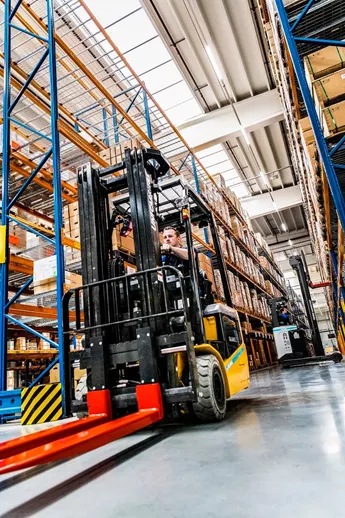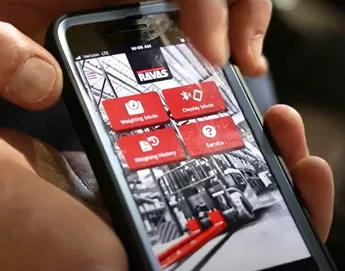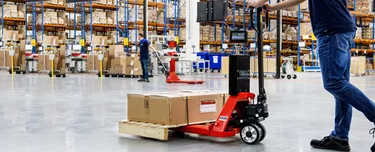Save time, money, space, manpower and achieve greater efficiency
Mobile weighing is the most efficient method of weighing products. RAVAS utilizes a weighing system built into various products, such as a pallet truck, electric pallet truck, stacker, order picker, reach truck, or forklift. If you already have one or more trucks, our technical specialists will also integrate the mobile weighing technology without any problems, regardless of the brand or model.
With a mobile weighing system, you weigh during internal transport, saving time, space, and manpower. You weigh where you want and are therefore flexible in your checks. A mobile weighing system pays for itself in a short time.
Discover how a mobile weighing system can make logistics processes more efficient and cheaper, generate management information, monitor the quality of your products and services, and promote customer satisfaction.
Efficient and Flexible
Mobile weighing systems make your intralogistics more efficient and flexible. Previously this was impossible. Companies had to count on industrial floor scales to collect weight data. Although it is a working product, the process is long and inefficient. It is often a bottleneck in logistical operations. Now, you can weigh in a very efficient manner.
For example, when you are order-picking products or receiving new orders, you are no longer tied to a fixed floor scale that takes up a lot of space and requires many unnecessary logistics movements. Including the approach route, this can quickly count up to twenty square meters. Instead, a forklift or pallet truck scale makes that lost warehouse space profitable again.
With a weighing system on your pallet truck or forklift, you also save time. You do two things at the same time: transport and weigh. You immediately know the weight of each loaded load. In the case of order picking, you check each order line and correct any errors where it costs the least: at the item location. Therefore, it is no longer necessary to drive back and forth with pallets or containers to a fixed scale. Save time and manpower and make your internal logistics a lot more efficient.

Blog: Mobile scale compared to a floor scale
With mobile weighing solutions you can work and weigh and manage your fleet twice as fast as with a traditional floor scale. But, words are just words. See for yourself how our scales can help you.
)
Examples of how a mobile weighing system is used
- Goods are measured on the forklift truck while the pallet is lifted from the forklift.
- In production, raw materials are dosed by moving the mixing vessel from component to component on a weighing pallet truck, eliminating the need for expensive pumps and piping systems.
- During order picking, each order line on the truck is weighed to prevent errors, and inefficient final checks are no longer necessary. Administrative processing becomes more accessible, and customer satisfaction increases.
- The forklift weighs each pallet during loading. The total weight is always known, which prevents the overloading of trucks.
Full Return on Investment
How quickly can a mobile weighing system pay for itself? Check out our example below detailing has fast you will receive a return on investment:
Suppose you weigh an average of four pallets per hour. Using a truck with an integrated scale while you transport the pallets saves an average of 1.5 minutes per pallet. Thus, a daily saving of 48 minutes or 200 man-hours per year. If a man-hour costs 25 dollars, you save over 5,000 dollars per year. The investment paid for itself within three months.

Trends and future
What role will mobile weighing systems and the integration of material and information flow play in logistics in the future? Logistics revolves around managing material flows. To run these material flows as efficiently as possible and keep costs as low as possible, we need to know everything about these material flows constantly. For example, these are the critical areas of a material flow that all logistical companies are continually trying to manage:
- How much quantity of material?
- Where is the material located?
- What is its logistical location?
- Where was it produced?
- How is it being used?
If information is continuously available to all stakeholders, we have achieved full integration of material and information flows.
In the future, more forklifts and warehouse trucks will be equipped with RF-ID for automatic identification of picked-up pallets or containers and an integrated weighing system for determining their weight. This information will be exchanged wirelessly via truck terminals, a W-LAN network, and a warehouse management system (WMS). For example, in addition to their basic function as a means of internal transport, trucks are increasingly becoming a platform for collecting and communicating real-time information about material flows.
Three examples of Mobile Weighing Solutions
Learn how other companies are saving time, money and space by using innovative mobile weighing systems.



